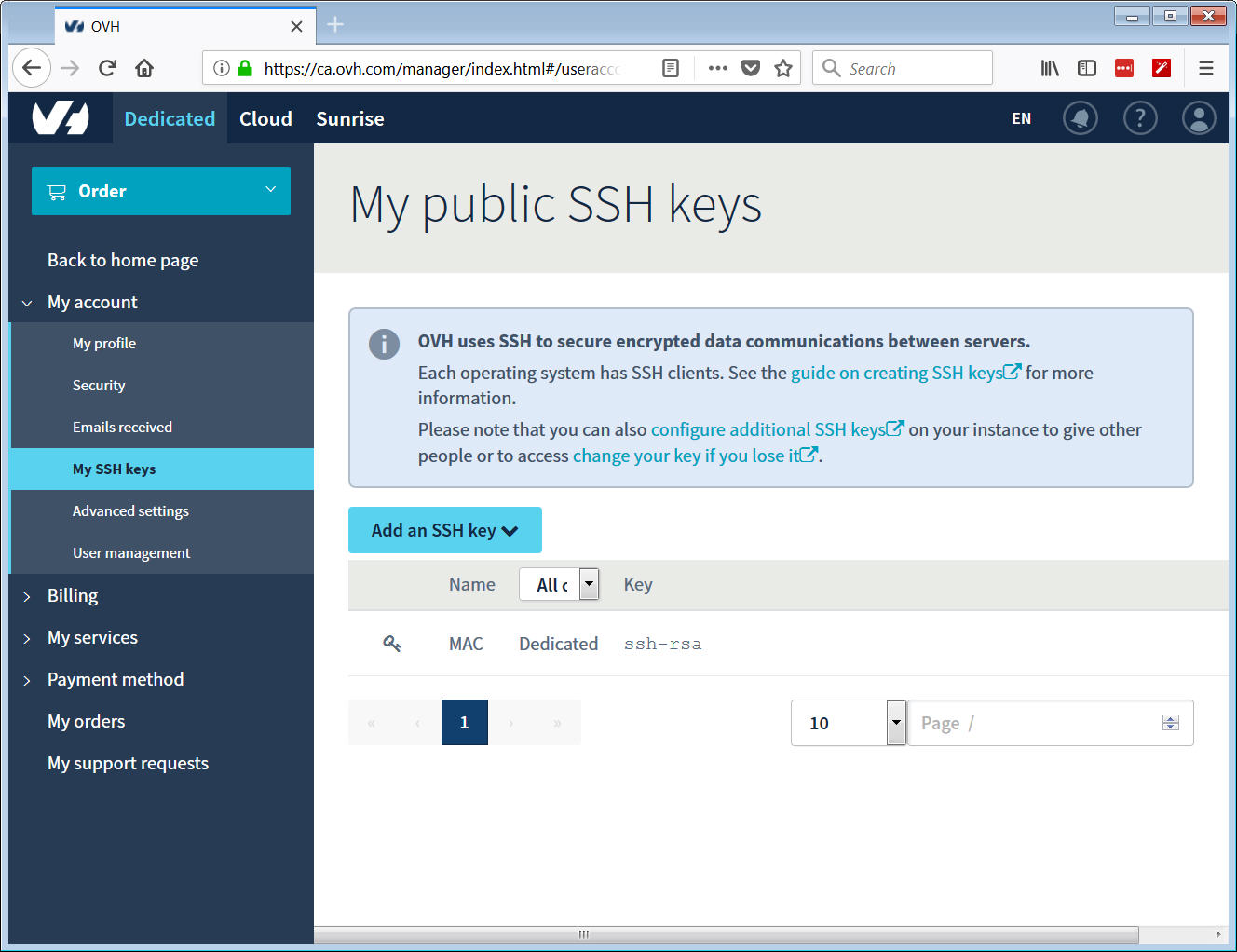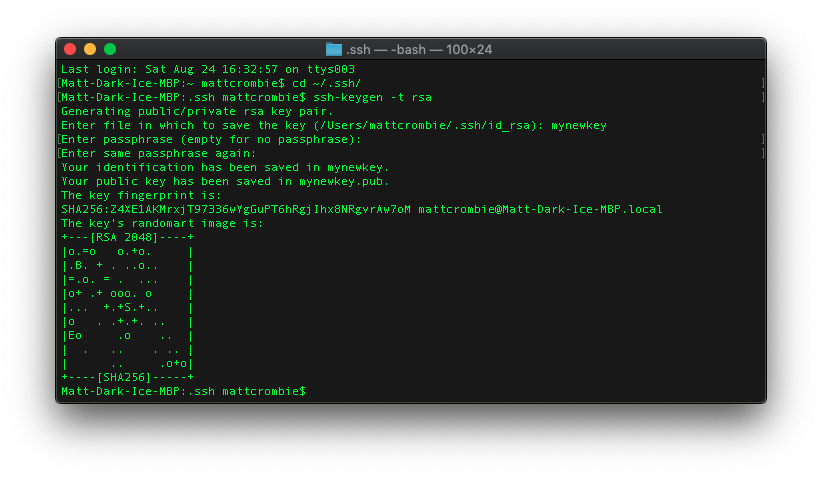

SSH KEYGEN MAC TERMINAL FULL
Take note of the full path of the private key file, which is especially important if you save it under your Documents directory. Once key generation has finished, you will be presented with the results:Ĭlick Save Private Key to save the private key to a file.
SSH KEYGEN MAC TERMINAL GENERATOR
The PuTTY Key Generator displays.Ĭlick the Generate button and follow the instructions. On your Windows workstation, go to Start > All Programs > PuTTY > PuTTYgen.Note the location to which your public and private key were saved they will be required in a subsequent step. Your public key has been saved in /Users/tony/.ssh/id_rsa.pub. Your identification has been saved in /Users/tony/.ssh/id_rsa. The output of the program will look similar to this: Enter file in which to save the key (/Users/tony/.ssh/id_rsa):Įnter passphrase (empty for no passphrase): You can optionally specify a passphrase to protect your key material. The ssh-keygen program will prompt you for the location of the key file.

At the shell prompt, type the following command: ssh-keygen -t rsa Create a Key Pair on Your Computer Linux and MacOS X In all cases, however, the procedure has three steps: create a key pair, change your RightScale SSH preferences, and test to ensure everything works as expected.

The procedure for creating a key pair varies depending on your operating system and preferred SSH client. If you find that your user's keys are still in the authorized_keys file after some time has passed and they should not be because they have no server_login permission, please contact our support team for assistance. This is normal - the key should eventually be removed from the authorized_keys file by a daemon that runs - but it only runs periodically at specific intervals so it may not be removed immediately. Important Note: When using Server Login Control (a.k.a Managed SSH) to manage your user's keys, the user's public key may not disappear from the ~/.ssh/authorized_keys file immediately after revoking the 'server_login' permission from that user.
SSH KEYGEN MAC TERMINAL HOW TO
This document will show you how to generate a personal SSH key pair and upload the public key to RightScale for use with Server Login Control.



 0 kommentar(er)
0 kommentar(er)
